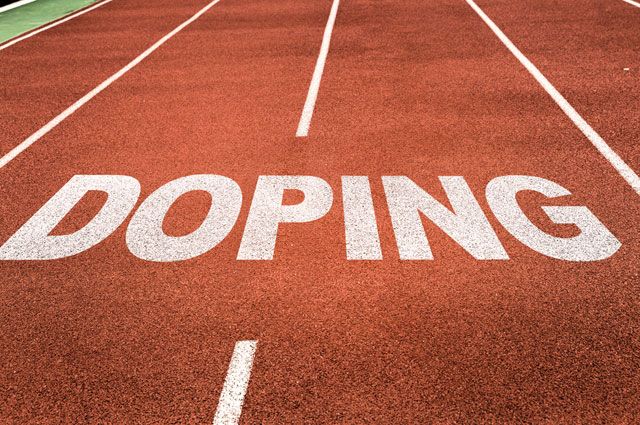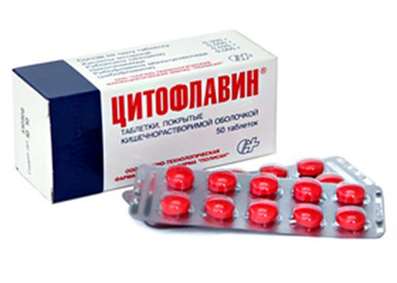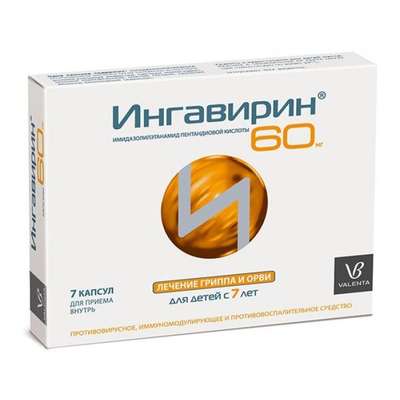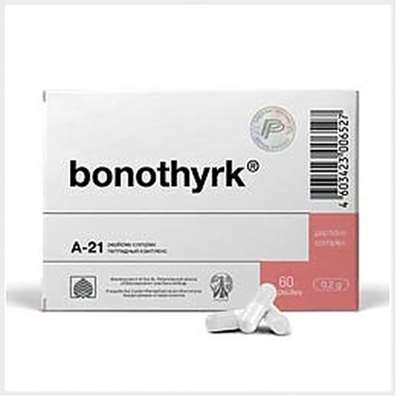What doping do you use?
31 May 2018
The five most potent types of doping.

Scandals associated with the use of banned drugs, occur almost monthly, but something we miss the ears. This time around the doping story does not work at all desire. Another scandal broke out a week before the start of the Olympic Games in Sochi, and it was involved in Russian biathletes. In general, in the world of doping, Russia, alas, was on the "front line". It does not take a year for our athletes not to light up in the doping scandals - the percentage of negative samples in Russian athletes is kept at a beyond the level. So this year has just begun, and already there was the "Yefimova case", now "the case of Yuryeva and Staryh" ...
In general, all this doping history is still coming from the USSR, when many coaches and doctors built their careers on what stuffed sportsmen with all sorts of drugs. Some can not stop until now. Gradually formed a list of the most popular drugs. We are trying to figure out which of them are now in the course, what kinds of sports are used and what they actually give.
1.Erythropoietin EPO
Let's start with the dope, in the use of which Catherine Yuryeva and Irina Starykh are suspected. Erythropoietin is a hormone that stimulates the formation of erythrocytes from late progenitor cells and increases the yield of reticulocytes from the bone marrow, depending on the consumption of oxygen. Erythropoietin - a kind of copy of the natural kidney hormone. After he gets into the blood, he activates the process of ripening of red blood cells.
History of appearance
The drug appeared in 1983, it was invented by American specialists. Almost immediately he was in the sport. But due to the fact that erythropoietin practically copied the natural hormone, it could not be caught. Only in the early 2000s in the French laboratory Chateau-Malabry found a way. After that, the tests of old samples were sent and almost all the famous cyclers of the past were caught using EPO. Nevertheless, then new types of EPO appeared. In particular, CERA, which was widely used by riders, but, since 2007, have learned to identify him. All this led to a whole stream of disqualifications for cyclists.
Physiological role
Erythropoietin (EPO) increases the amount of hemoglobin in the blood, so blood can carry more oxygen in the body, which improves endurance.
Scope of application
Cyclic sports: cycling, cross country skiing, biathlon, swimming, speed skating.
The loudest scandals
In 2001, at the home world championship in cross-country skiing on the use of EPO, almost all the starry Finnish team was caught - Mika Myllyul, Jari Isometasa, Virpi Kuitunen.
A year later at the Olympic Games in Salt Lake City, our turn came - the victims of the checks were Larissa Lazutina and Olga Danilova.
In 2008, the Tour de France was immediately captured by 4 people, in their blood was found a new kind of EPO - CERA. Disqualifications were awarded to the overall standings Bernhard Kohl, as well as the winners of the individual stages Stefan Schumacher, Riccardo Ricco and Leonardo Piepoli. The results of the race were revised.
Also on the application of CERA was caught a two-time world champion, a runner at 1500 and 5000 meters Rashid Ramzi. Olympic champion, he was only a few days, one of the samples taken from him at the Games in Beijing, showed the presence of blood doping.
The previous biathlon scandal involving Akhatova, Yaroshenko and Yuryeva also did not do without mentioning the EPO.
2.Anabolic steroids (testosterone, stanozolol, nandrolone, methenolone, OSTARIN)
At its core, anabolics are pharmacological drugs that mimic the effect of the male sex hormone testosterone and dihydrotestosterone. Anabolic steroids accelerate the synthesis of protein inside cells, which leads to severe hypertrophy of muscle tissue (in general, this process is called anabolism).
History of appearance
Back in the 30s of the last century, scientists learned to artificially reproduce testosterone. Then, in the 1940s, the anabolic actions of testosterone began to improve in the USSR and the country of the Eastern bloc. Until now, it is believed that track and field records established in the 80s by athletes from the former USSR countries, as well as the GDR were established with the help of steroids.
On the threshold of centuries the American laboratory BALCO tried to improve anabolic steroids, created tetrahydro-testosterone.
Physiological role
Due to the use of steroids, there is a significant increase in muscle mass (5-10 kg per month), strength indicators, endurance, production of erythrocytes increase, bone tissue strengthens, fat reserves decrease.
In principle, it is still believed that steroids are the most effective type of doping, but the trouble is that they learned to recognize it easily.
Scope of application
Track and field athletics (sprint, throwing, long jumps), weightlifting, swimming, cross-country skiing.
The loudest scandals
Scandals associated with the use of steroids pond a dime. I'll just name a few names: Ben Johnson, Carl Lewis, Marion Jones, Tim Montgomery, Frank Luc, Anfisa Reztsova, Irina Korzhanenko, Nadezhda Ostapchuk, Irina Sergeeva. The list can stretch over several dozen pages ...
3.Diuretics (chlortalidone, acetazolamide, triamterine, furosemide)
Diuretics are diuretics that are often used to remove excess fluid from the body in order to give relief to the muscles. Usually used before competitions, as the effect is rather short. Diuretics can be taken during the steroid cycle, since anabolic steroids cause excessive accumulation of fluid. Intensive urination helps to remove from the body of other dopes or mask their use by significantly reducing the density of urine.
History of appearance
In sports, diuretics appeared almost immediately after anabolic steroids came into use.
Physiological role
They help to quickly reduce body weight, improve the appearance of athletes. Dehydration helps to give the musculature of the stressed forms.
Scope of application
Rhythmic gymnastics, figure skating, athletics, weightlifting.
The loudest scandals
Most often, diuretics are used to hide the use of steroids. At the Olympics in Seoul, the Bulgarian national team won 4 gold and 1 bronze medals. However, after her representatives Mitko Grablev and Angel Genchev were caught using diuretics, the whole weightlifting team was withdrawn from the Olympics. Two Hungarian weightlifters were also caught using similar diuretics.
Quite often athletes manage to prove that the use of diuretics was not conscious, they can enter into nutritional supplements. Lately, the Olympic champion Cesar Sielo Filho and the Jamaican runner Veronica Campbell-Brown managed to "slip" from the disqualification.
4.Transfusion of blood and its components (blood transfusion) and autohemotransfusion
Blood transfusion is a transfusion, a special case of transfusion, in which the blood or its components are transfused from the donor to the recipient biological fluid.
Autohemotransfusion - transfusion to the recipient of his own blood.
History of appearance
It is difficult to say when the first time athletes resorted to autohemotransfusion, but in 1985 all kinds of transfusions were banned. It happened after the American cyclers at the Olympics in Los Angeles publicly confessed to a transfusion. The first cases of detection of such a trick after its official ban were identified already in the 2000s, after which WADA insisted on the introduction of biological passports. The system of the passport of the blood is based on its regular collection in athletes and the analysis of blood parameters: hemoglobin, erythrocytes and reticulocytes. An increase in the level of blood cells and hemoglobin leads to an increase in the function of transport of oxygen from the blood to the muscles, and consequently, to an increase in working capacity.
Often, the increase in the level of red blood cells and hemoglobin is associated with various types of transfusions.
Physiological role
Autohemotransfusion accelerates the delivery of oxygen to the muscles, thereby increasing their productivity.
Scope of application
Cycling, athletics, cross country skiing.
The loudest scandals
The first on blood transfusion was caught the Olympic champion 2000 in the race with a separate start American Tyler Hamilton.
Olympic champion of London Kazakhstan cyclist Alexander Vinokurov at the Tour de France in 2007 was also caught on blood transfusion and disqualified for 2 years. According to the experts of the Châteaune-Malabry laboratory, where the analysis of the doping test was conducted, Vinokurov's blood transfusion was performed on July 21, the same day when the 13th stage was won. In this regard, Alexander and the whole team of Astana (at the request of the leadership of the Tour de France), left the French grand tour.
5. Stimulants of mental activity (cocaine, ephedrine, ecstasy and amphetamines)
In acute conditions, stimulants rapidly change the functional indices of brain activity (activate the bioelectrical activity of the brain, change conditioned reflexes, etc.), increase endurance to physical work. In conditions of clinical use, they have a rapidly onset stimulating effect, are widely used in practice for the treatment of diseases accompanied by drowsiness, lethargy, apathy, asthenia, depression. Increasing the functionality of athletes under the influence of stimulants is largely due to the blockade of physiological regulators, the boundaries of the mobilization of functional reserves.
History of appearance
Different kinds of stimulants appeared in sports at different times. In particular, ephedrine appeared on the horizon in the late 70-ies of the last century.
Physiological role
These drugs increase vitality, reduce fatigue, stimulating an increase in training time or performance at competitions.
Scope of application
Absolutely any kind of sport - from boxing to rhythmic gymnastics.
The loudest scandals
At the Olympics in 1976 in Innsbruck in the body of the Soviet skier Galina Kulakova was found ephedrine. True, Kulakov was removed for only 1 race, as it was proved that ephedrine was found in her body due to the use of a nasal spray. This disqualification was the first in the history of disqualification for the use of prohibited drugs in competitions skiers at the Olympics.
In 1994, the famous Diego Maradona was disqualified for 15 months for the use of ephedrine in the World Cup.
On the use of ephedrine and pseudoephedrine, the famous American athlete Carl Lewis came across, but he was never disqualified, and he managed to convince everyone that the cough medicine was at fault ...
In 2011, on the use of ephedrine was caught Ukrainian biathlete Oksana Khvostenko.

 Cart
Cart





